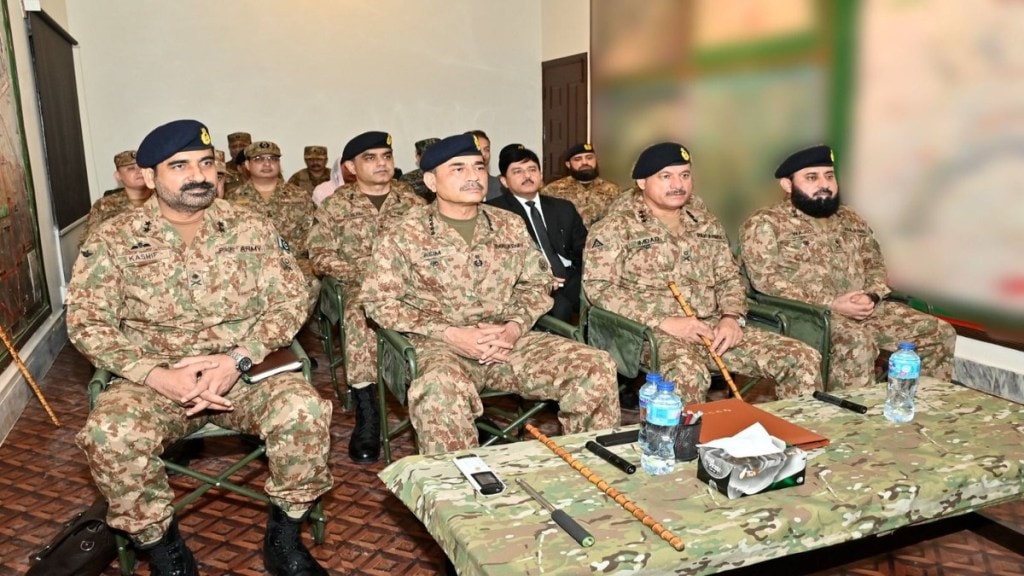Pakistan’s Punjab government and the military leadership have expressed grave concern over the extensive damage caused to Gurdwara Darbar Sahib, Kartarpur Sahib, following severe flash floods this week. The revered Sikh shrine, situated in Narowal near the India-Pakistan border, remained inundated for several days after breaches in embankments along the Ravi River and Nullah Bae. Water levels inside the shrine reportedly rose as high as 10 to 12 feet, submerging its courtyard and halting pilgrim activity.
Asim Munir reviews relief and restoration efforts
Field Marshal Asim Munir, Pakistan’s Chief of Army Staff (COAS), visited Kartarpur on Friday to review the extent of the damage, as well as ongoing rescue and relief measures, reports The Express Tribune. According to the Inter-Services Public Relations (ISPR), Munir interacted with members of the local Sikh community, assuring them that all religious sites affected by the floods would be fully restored to their original condition on priority. He also conducted an aerial survey to assess the broader impact of the flooding on Kartarpur and surrounding areas.
Immediate repair and cleaning underway
The Pakistan Evacuee Trust Property Board (ETPB), which oversees Sikh religious shrines, confirmed that restoration work had begun after floodwaters receded. Rescue teams, the district administration, and army personnel have cleared water from the main courtyard, the Darshan Deori, and inner sections of the gurdwara. Special precautions were taken to protect the Guru Granth Sahib, Sikhism’s holy scripture. However, progress has been slowed by power outages and renewed rainfall, with officials deploying pumping machines and drainage channels alongside manual cleaning.
Religious leadership calls for assessment
In India, the officiating jathedar of the Akal Takht, Giani Kuldip Singh Gargajj, reportedly urged the Pakistan Sikh Gurdwara Parbandhak Committee (PSGPC) to work with the ETPB to assess the full scale of the damage. He directed that a detailed report be prepared and shared with the Akal Takht Secretariat through the Shiromani Gurdwara Parbandhak Committee (SGPC). Pakistani officials have said that the shrine will likely reopen for pilgrims within three to four days, depending on weather conditions and the Ravi River’s flow.
Flood crisis across Pakistan Punjab
The inundation at Kartarpur is part of a much wider flood crisis across Punjab province. Earlier this week, more than 200 pilgrims were stranded at the shrine complex when waters surged overnight. Rescue operations were carried out swiftly with army assistance. Across the border in India’s Gurdaspur district, the town of Dera Baba Nanak, home to another sacred Sikh site, also faced rising river levels and flood risks.
India alerts Pakistan of flood
Despite strained bilateral relations, India issued multiple flood alerts to Pakistan in recent weeks, warning of “very high to exceptionally high” flood levels in rivers such as the Ravi, Chenab, Sutlej, and Tawi. The alerts, sent outside the framework of the suspended Indus Waters Treaty, enabled Pakistani authorities to conduct mass evacuations, saving over 150,000 lives in Punjab province. Officials in Islamabad acknowledged receiving at least four such warnings, crediting them with averting a larger humanitarian disaster.
Pakistani officials have pledged that long-term measures will be implemented to prevent future flooding at Kartarpur and other religious sites. These include strengthening embankments, upgrading drainage infrastructure, and installing advanced early-warning systems.


